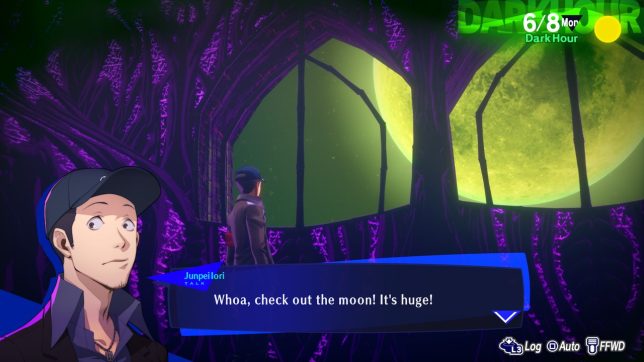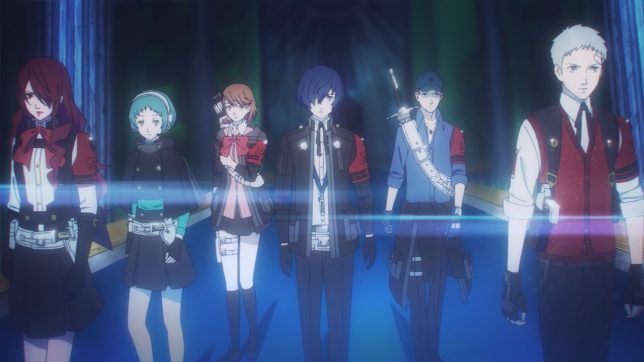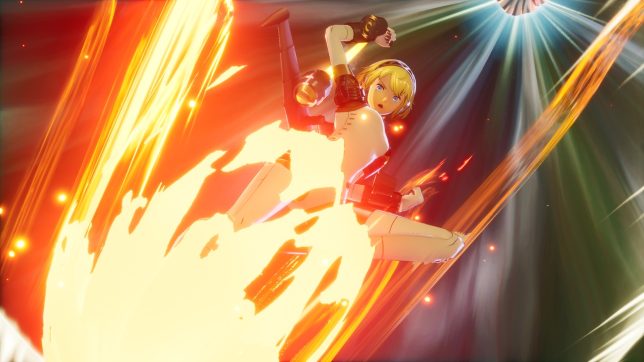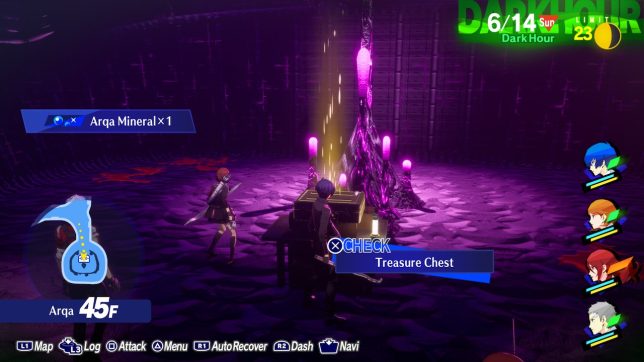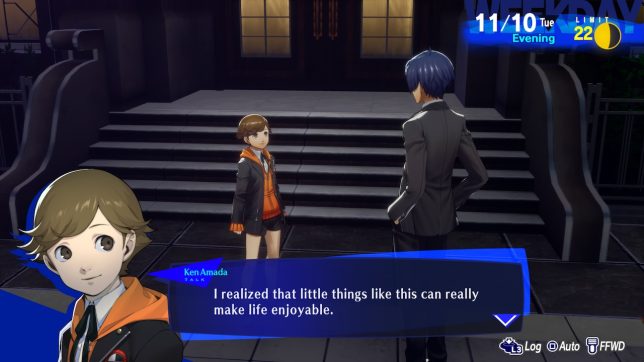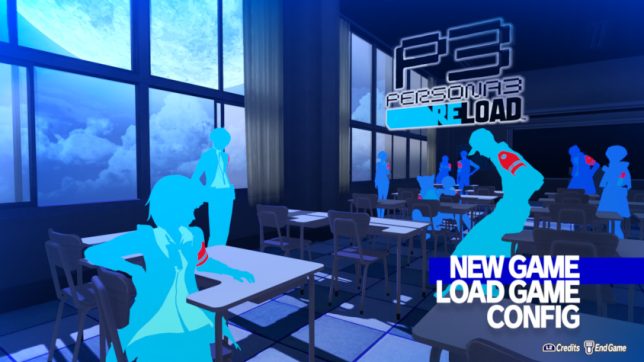
[Insert “I’m Blue” reference here]
Amidst the sea of modern remakes (the good, the bad, and the somewhat pointless), the resurrection of Persona 3 has reminded me of why I fell in love with the series.
Some Personal History
You may have heard me talk on the GameCola Podcast about the Persona series. It’s shocking how much 2017’s Persona 5 catapulted the series from its position as a moderately popular but still niche group of games into global mainstream attention. It’s no secret that I’m a huge fan, and I know that a lot of people got their start with this one. I…sort of did, but it’s not quite so simple. When the game first launched, I’d been watching a favorite content creator play through the game. Based on how much he seemed to be enjoying himself, and at the recommendations of a few friends, I resolved to get into the series myself.
Trouble was, Persona 5 was exclusive to PS3 and PS4, of which I owned neither. The definitive version of the previous installment, Persona 4 Golden, was only on PS Vita, which I also didn’t own. I tried playing the original release of Persona 4 on PS2 via emulation, since (shockingly enough) it was still being sold on Amazon for around $20 brand-new. But, to say that my experience playing that game wasn’t great would be an understatement. The “Golden” re-release for Vita apparently changed and improved a whole lot about Persona 4 in subtle but important ways, namely the difficulty balancing and overhauling some minor gameplay mechanics. Not only was I struggling with frustrating gameplay in a few instances, but the story was also very slow-paced, and I just wasn’t meshing with the characters or setting very much either. So I grabbed Persona 3, also for PS2, and tried giving that one a go. Oddly enough, it made a much better first impression on me than its successor in terms of both gameplay and story. That being said, I’d heard from my friends that it was notoriously difficult, so I selected the easy difficulty option and decided I’d make judicious use of emulator save-states for the sake of being able to keep pushing forward. Spoiler alert: I’m glad I did; my friends weren’t kidding!
But once I’d pushed past the sometimes frustrating random elements and gotten used to the (admittedly unpolished) battle system, I started to get the feeling that there was something very unique about this game. Sure, Persona 4 and 5 both had some seriously unique identities, and 5 in particular had a bombastic and over-the-top style that set it apart from most other games I’d ever played. But something hidden behind the clunky, dated presentation and gameplay of Persona 3 lay something really special. Its cast of characters and story in particular captured my heart and convinced me to push through all the way to completion.
What’s New?
Foundationally, Persona 3 Reload is built on Unreal Engine, a first for the series. Despite this, however, the game looks and feels functionally similar to Persona 5, so whatever “engine atop the engine” Atlus is using has either been ported seamlessly from that title, or they’ve managed to recreate it well enough to be basically indistinguishable. And of course, that means that they’ve been able to update Persona 3‘s visual style to bring it in line with its contemporary in terms of style and graphic design. And boy does it look beautiful! I thought Persona 5 Royal was where the series might peak visually but I’m glad to see that I was wrong. This overhauled UI, in beautiful shades of blue and sporting an underwater aesthetic, is a feast for the eyes. It absolutely oozes style and pizzaz. And despite all the improvements, the core aesthetic and mood of the original game is pretty well preserved: a mix of melancholy, optimism, surrealism, and some emotion that to this day I still can’t pin down. I thought that maybe it had something to do with the dated PS2 graphics of the original game, but after experiencing the remake, I don’t think that’s what it is, either.
The music is another aspect of this game that contributes to its identity in a big way. It features electronic music with low fidelity 2000s-era synthesized instruments, intense rock music, and even some rap and hip-hop inspired tracks featuring vocalist Lotus Juice. Some of the most prominent tracks feature sparse compositions with heavily-distorted drums and haunting vocal chants backed by mostly-decipherable English rap, such as “Burn My Dread -Last Battle-“. Everything about this game’s music, especially these tracks, carries a unique vibe that I can only describe as “Persona 3“. The remake’s soundtrack has been remixed and remastered, featuring a handful of new (and absolutely incredible) tracks, along with all the original songs, reimagined and revamped. It’s definitely a bit weird to get used to so many familiar songs sounding different than I’m used to, but I’m not complaining! It’s also definitely endearing to hear some tracks that have kept the exact same goofy hip-hop vocal pack samples as the original game.
Something else I found interesting is that they seem to be keeping very faithful to the original script, save for a couple exceptions I’ll mention shortly. When I started the game, I was coming off the heels of replaying the first half of the PS2 original, to try to gather impressions on it before the remake came out. Upon beginning the remake, I was able to recite what each character said in the opening hours of gameplay nearly by heart. However, they have made a couple surprising but welcome changes to the way that certain characters act to make them feel a bit more likeable. Yukari Takeba is the first character you meet in the game besides your own character, and she’s also someone you spend a lot of time around, being a party member and all. In the original game, Yukari had several moments during the opening chapters where she’d come across as unexpectedly snarky towards other party members in a way that felt a bit mean-spirited and harsh. In Reload, the tone of voice in these lines has been altered to soften things up a bit and it makes a huge difference in making Yukari and other characters seem less like unprovoked jerks, and more like relatable people with meaningful differences in beliefs, experiences, and opinions. To be clear, this was never a huge problem to begin with, but little moments like this could definitely add up to paint a player’s opinion of a character in a negative light.
This segues nicely into discussing the all-new English voice cast in the remake. Despite the Japanese cast all reprising their roles, the localized dub features entirely new blood for the main characters (though as a nice nod, almost the entire original cast do voice extras and background characters). Not only that, but for the first time in the Persona series, all Social Links (gameplay segments where you can hang out with a character in order to get to know them better while also earning yourself gameplay perks) are fully voiced. This goes a long way to adding a real sense of humanity and relatability to all the characters. Voice acting is a huge boon to make the vast majority of the social links even greater than they already were, and to improve the ones that were initially lackluster.
With all that said, by far the area with the most improvements is the gameplay, which is great, because that was definitely where the 2007 original felt the roughest around the edges. In the original PS2 game, you could only control your main character in battle, and party members would act on their own based on the “tactics” option you’d chosen for them. But no more; full party control is here and it is oh-so-nice, providing a significantly less frustrating experience overall. The combat is snappy thanks to responsive menus, and the animations—while stylish—don’t overstay their welcome. And even if you get tired of that (since you will be doing a lot of fighting in this game), there’s the auto-battle function that basically puts everything in fast-forward, a staple of the series. Characters also have new powerful “Theurgy” attacks which charge up slowly over the course of battles, which also feature incredibly flashy and over-the-top scenes to accompany them. The best part of them, though, is that they ignore enemy elemental resistances, meaning even if you’ve accidentally brought a character who’s ill-equipped for the current battle, they can still contribute some modest amount.
It’s Not All Perfect
With all that said, there’s only so much a remake can do when it wants to stick relatively close to the source material. The voice acting for the Social Links, for example, is a massive improvement and boosts many of the “meh” characters into greatness, or gets me to pay attention to characters that I previously just never took an interest in. But Persona 3‘s Social Links in particular have some of the highest highs…and lowest lows of the series, and for those real stinkers, the excellent voice acting is just polishing a turd.
Additionally, the game’s plot, while excellent, takes a surprisingly long time to actually start! It’s not until several in-game months after the beginning where we start to meet the over-arching villain group, and months more until they really start facing off with us. It’s really in the last third of the game where things get serious and this entry in the series comes into its own. To this remake’s credit, there’s a couple new scenes added (or imported from the PSP port of the game), but they do very little to fill in the dearth of real plot in the first half of the game.
When it comes to gameplay, there’s a lot done to improve the most prominent and unique part of this game: the exploration of Tartarus. Persona 3 and Persona 4 both feature multi-floor dungeons made from randomly-generated segments, but it’s clear that the former has some shortcomings in its design. Most of the dungeon-crawling side of the game takes place in one enormous tower called Tartarus, which occasionally changes appearance and slightly alters the music every few-dozen floors. By contrast, Persona 4 has separate dungeons featuring completely new aesthetics and music with each major chapter of the game. Reload adds a lot more visual variety and detail to each area of Tartarus, as well as more items to collect and side challenges to spice things up. However, there’s no unique puzzles to solve or even story-related dialogue most of the time like Persona 4 and 5 have, so it can start to feel really same-y by comparison. I didn’t find this to be something that bothered me much, but combat against normal foes does start to wear thin by the end of each block of floors. It’s ultimately a design aspect that many people find a lot more egregious than I do, which I understand completely, and it’s kind of an awkward spot to be in for a remake that’s trying to stay faithful.
Lastly, while I think that the atmosphere and tone of this game remains largely intact, some of the grittiness of the original music and cutscenes has been lost in a handful of places. The original animated opening cutscene that plays when you start a new game, and the scene of the main character’s Persona awakening, feel just a little less “raw” and intense in this remake. I wouldn’t say anything feels “sanitized” or “ruined” by any means, but I think that the developers have perhaps sanded down a smidge too many of the original game’s rough edges.
A Fantastic Experience
With those gripes and disclaimers out of the way, I do want to reiterate how much I loved this game. Despite how much I enjoyed it at the time, the original PS2 version of Persona 3 is quite difficult to recommend, even to folks who are very interested in the series. But this new remake basically makes the PS2 original obsolete as far as I’m concerned. As an aside: people who’ve played the PSP version, Persona 3 Portable, might have some remarks about how that version’s exclusive content and alternate main character provide a compelling reason to check that entry out. I haven’t played it myself so I can’t say anything regarding that, but I believe that if you’re gonna start out with any version of the game, it ought to be this one, no question. It’s the most polished and well-rounded way to experience this awesome game, and well worth checking out. And if you do, I hope you’ll come to understand why this entry in the series is so beloved.

